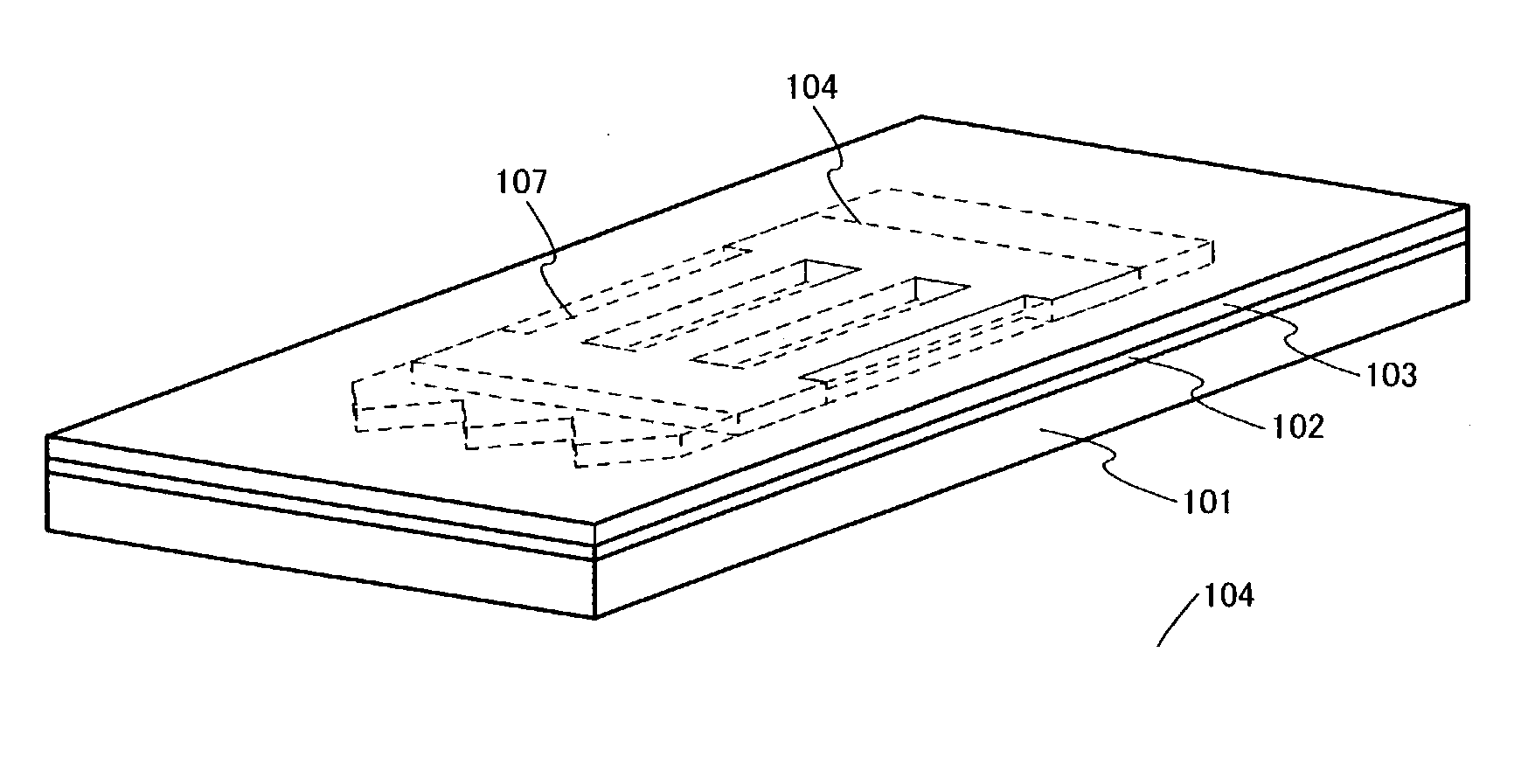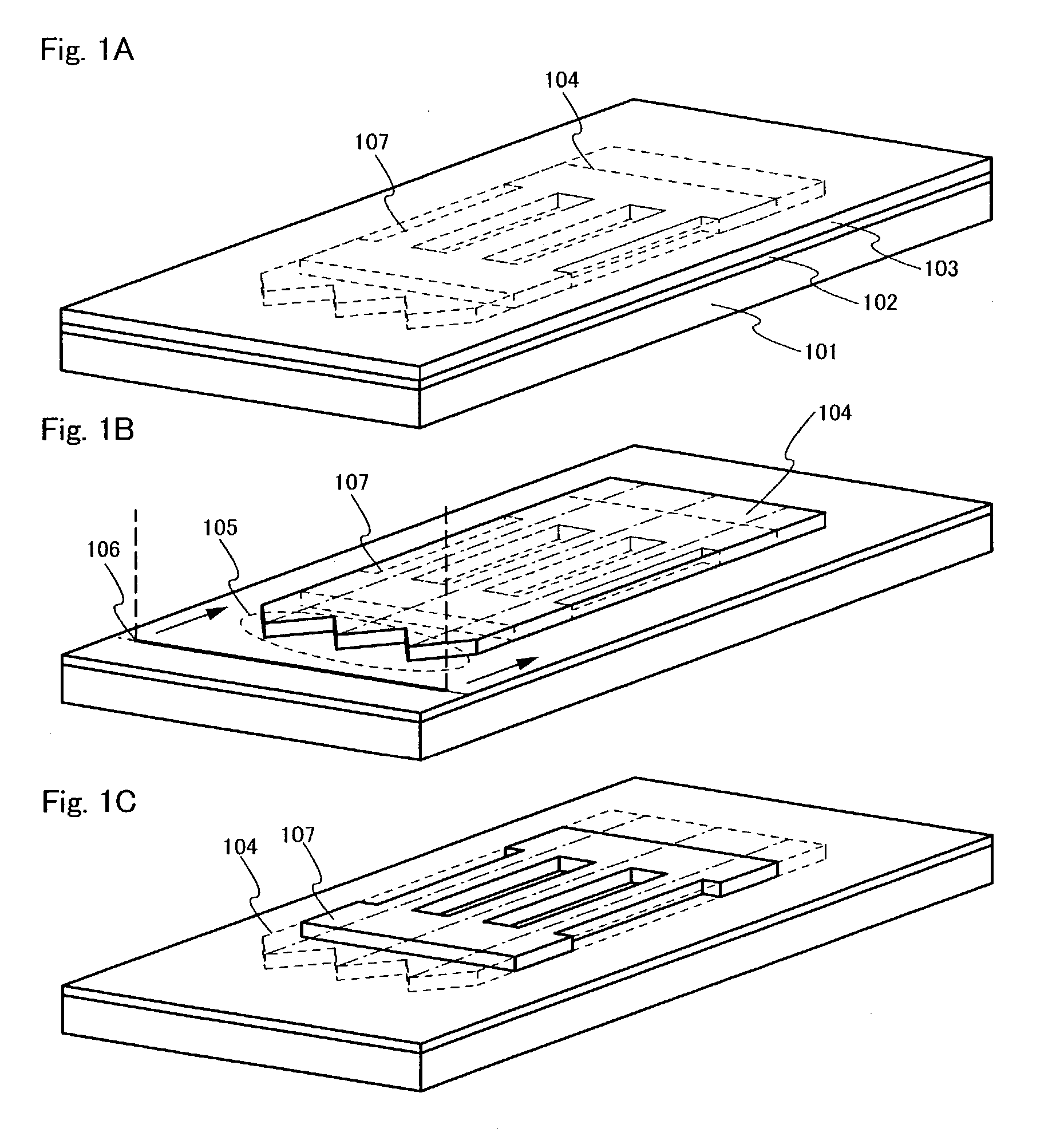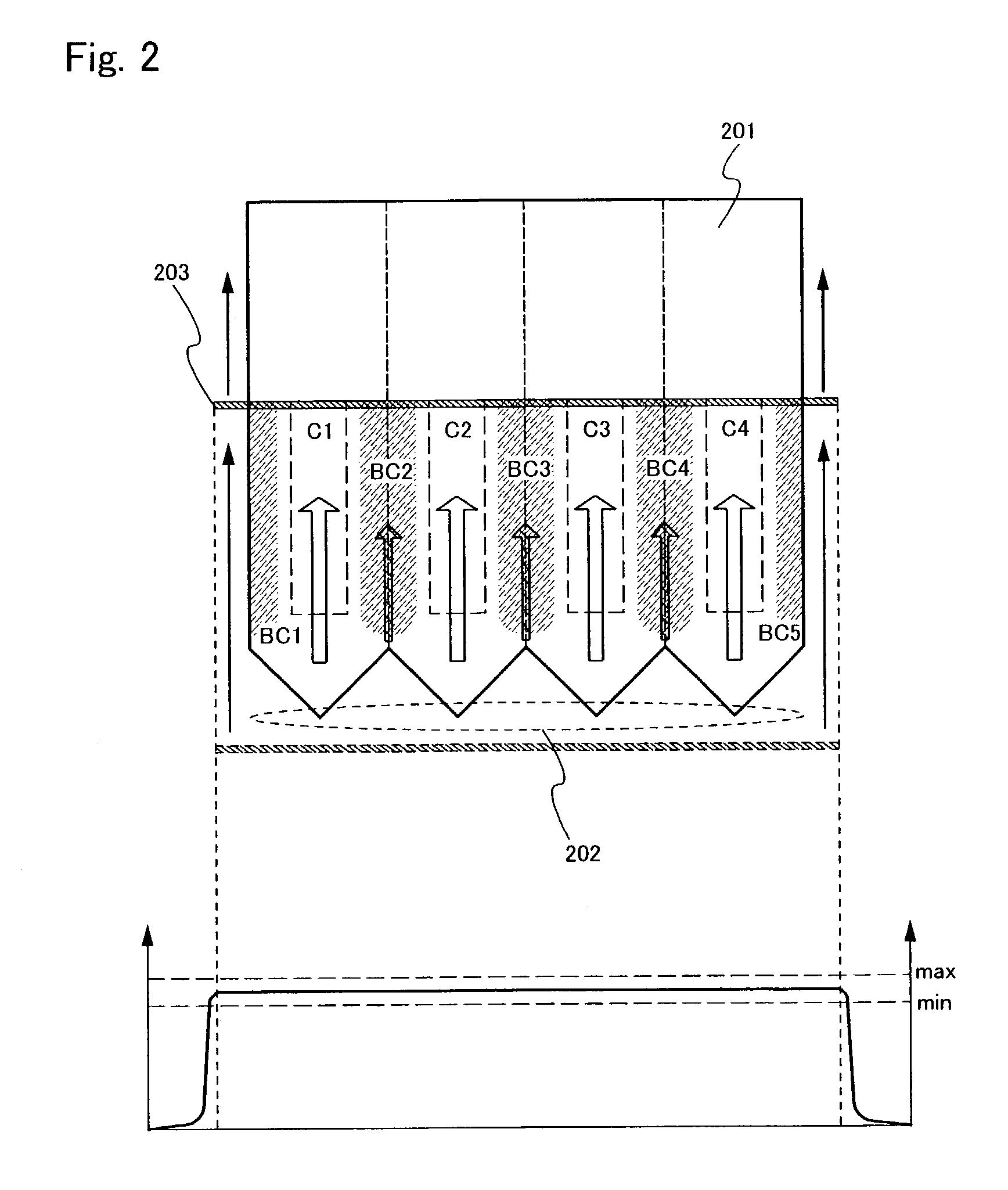Semiconductor device and method of manufacturing the same
a semiconductor and semiconductor technology, applied in the direction of transistors, optics, instruments, etc., can solve the problems of not being able to grow crystals with a particular orientation, not being able to control the producing position and density of crystal cores, and not being able to orient all surfaces of substrates, etc., to achieve the effect of reducing the dispersion of threshold voltage and improving the mobility of field
- Summary
- Abstract
- Description
- Claims
- Application Information
AI Technical Summary
Benefits of technology
Problems solved by technology
Method used
Image
Examples
embodiment 1
[0081] In this embodiment, an amorphous silicon film formed on an insulating surface is etched into a predetermined pattern in a photoetching method to form a first shape of semiconductor region, which is then crystallized by means of a continuous wave laser beam.
[0082] In FIGS. 8A and 8B, a barrier layer 402 consisting of a silicon oxide nitride film of 100 nm is formed on a glass substrate 401. A first shape of semiconductor region 403 on the barrier layer 402 is an amorphous silicon film formed by a plasma-CVD method into a thickness of 100 nm. FIG. 8A is a top view of the first shape of semiconductor region 403, while FIG. 8B shows a cross-sectional structure including a substrate. Second shape of semiconductor regions 405a and 405b for providing an active layer of a TFT are formed inside the first shape of semiconductor region 403 so as not to reach the end thereof, as shown by dotted lines, although they are not yet concretely expressed in this stage.
[0083] A region provided w...
embodiment 2
[0088] The scanning of the laser beam in the embodiment 1 may be scanned not only in one direction but also back-and-forth strokes. In this case, the seed regions 404a and 404b may be provided at both sides of the first semiconductor region 403 as shown in the embodiment of FIGS. 11A and 11B. In case of back-and-forth strokes, laser energy density is changed every stroke so that the crystal growth can be phased. The scanning of the laser beam also serves for hydrogen extraction treatment that is often required in case of crystallization of amorphous silicon film. After hydrogen is extracted by scanning at low energy density at first, the crystallization may be performed by the second scanning at higher energy density. This producing method also results in a crystal semiconductor film which crystal grains extend in the scanning direction of the laser beam.
embodiment 3
[0089] The embodiment 3 intends that an amorphous silicon film formed on an insulating surface is crystallized in advance and enlargement of a crystal grain by a continuous wave laser beam.
[0090] As shown in FIG. 12A, blocking layer 502 and a amorphous silicon film 503 are formed on a glass substrate 501 like the embodiment 1. A 100 nm thick oxide silicon film as a masking insulation film 504 is formed on the blocking layer 502 and the amorphous silicon film 503 by plasma CVD technique, and an opening 505 is provided. In order to add Ni as a catalytic element, water solution containing 5 ppm nickel acetate is spin-coated. Ni is in contact with the amorphous silicon film at the opening 505. A location where the opening 505 is formed is located in the seed region of the first semiconductor region that is formed later or out side of the seed region.
[0091] Then, as shown in FIG. 12B, the amorphous silicon film is crystallized by a 4 hours heat treatment at a temperature of 580.degree. C...
PUM
| Property | Measurement | Unit |
|---|---|---|
| length | aaaaa | aaaaa |
| angle | aaaaa | aaaaa |
| absorption coefficient | aaaaa | aaaaa |
Abstract
Description
Claims
Application Information
 Login to View More
Login to View More - R&D
- Intellectual Property
- Life Sciences
- Materials
- Tech Scout
- Unparalleled Data Quality
- Higher Quality Content
- 60% Fewer Hallucinations
Browse by: Latest US Patents, China's latest patents, Technical Efficacy Thesaurus, Application Domain, Technology Topic, Popular Technical Reports.
© 2025 PatSnap. All rights reserved.Legal|Privacy policy|Modern Slavery Act Transparency Statement|Sitemap|About US| Contact US: help@patsnap.com



